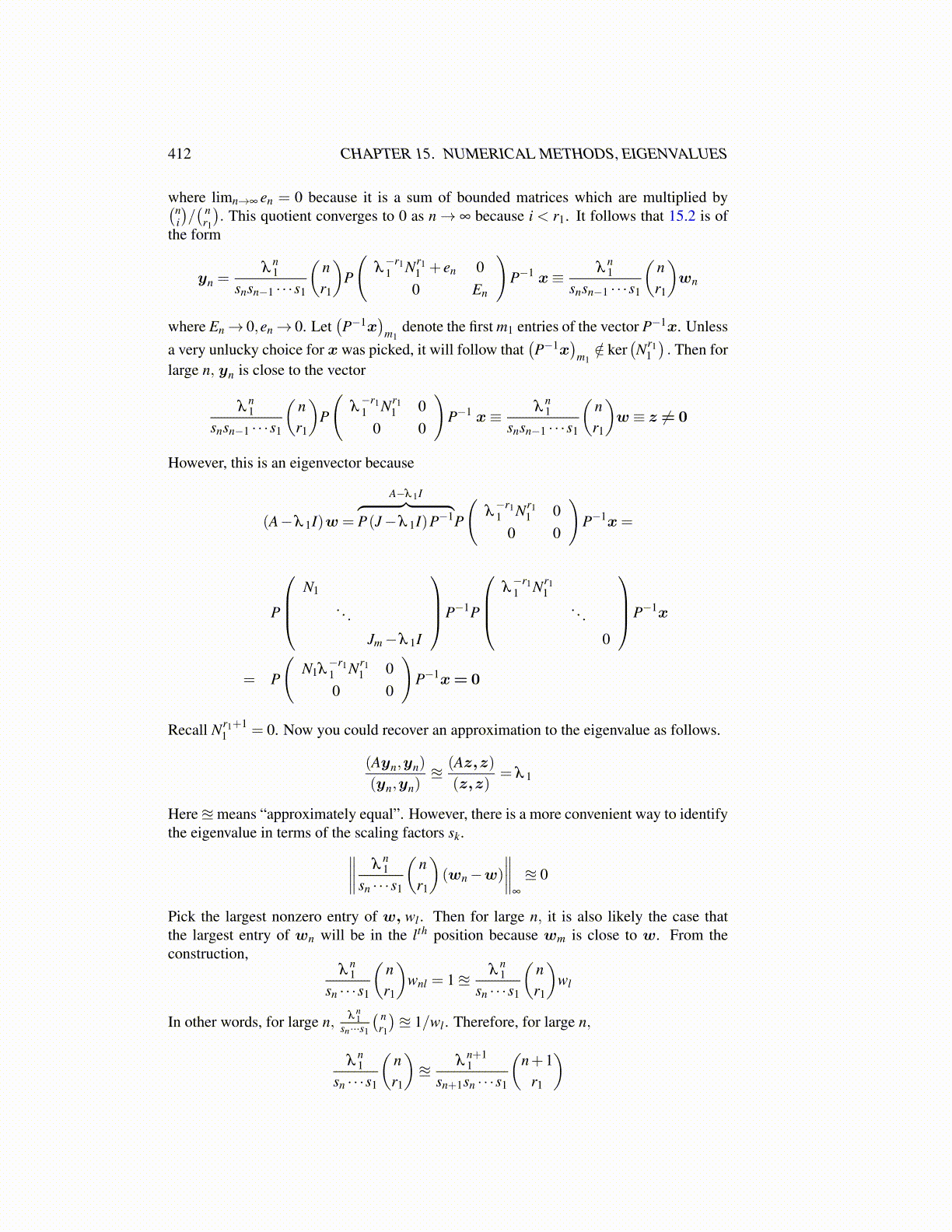
412 CHAPTER 15. NUMERICAL METHODS, EIGENVALUES
where limn→∞ en = 0 because it is a sum of bounded matrices which are multiplied by(ni
)/( n
r1
). This quotient converges to 0 as n→ ∞ because i < r1. It follows that 15.2 is of
the form
yn =λ
n1
snsn−1 · · ·s1
(nr1
)P
(λ−r11 Nr1
1 + en 00 En
)P−1 x≡ λ
n1
snsn−1 · · ·s1
(nr1
)wn
where En→ 0,en→ 0. Let(P−1x
)m1
denote the first m1 entries of the vector P−1x. Unlessa very unlucky choice for x was picked, it will follow that
(P−1x
)m1
/∈ ker(Nr1
1
). Then for
large n, yn is close to the vector
λn1
snsn−1 · · ·s1
(nr1
)P
(λ−r11 Nr1
1 00 0
)P−1 x≡ λ
n1
snsn−1 · · ·s1
(nr1
)w ≡ z ̸= 0
However, this is an eigenvector because
(A−λ 1I)w =
A−λ 1I︷ ︸︸ ︷P(J−λ 1I)P−1P
(λ−r11 Nr1
1 00 0
)P−1x=
P
N1
. . .
Jm−λ 1I
P−1P
λ−r11 Nr1
1. . .
0
P−1x
= P
(N1λ
−r11 Nr1
1 00 0
)P−1x= 0
Recall Nr1+11 = 0. Now you could recover an approximation to the eigenvalue as follows.
(Ayn,yn)
(yn,yn)≊
(Az,z)(z,z)
= λ 1
Here≊means “approximately equal”. However, there is a more convenient way to identifythe eigenvalue in terms of the scaling factors sk.∥∥∥∥ λ
n1
sn · · ·s1
(nr1
)(wn−w)
∥∥∥∥∞
≊ 0
Pick the largest nonzero entry of w, wl . Then for large n, it is also likely the case thatthe largest entry of wn will be in the lth position because wm is close to w. From theconstruction,
λn1
sn · · ·s1
(nr1
)wnl = 1≊
λn1
sn · · ·s1
(nr1
)wl
In other words, for large n, λn1
sn···s1
( nr1
)≊ 1/wl . Therefore, for large n,
λn1
sn · · ·s1
(nr1
)≊
λn+11
sn+1sn · · ·s1
(n+1
r1
)